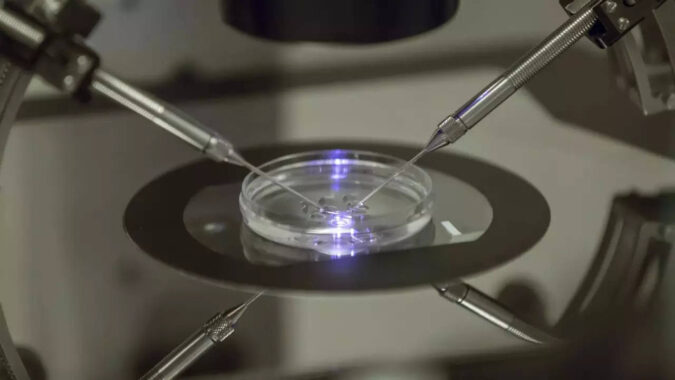LONDON: Britain’s fertility regulator on Wednesday confirmed the births of the UK’s first babies created using an experimental technique combining DNA from three people, an effort to prevent the children from inheriting rare genetic diseases. Britain’s human fertilization and embryology authority said fewer than five babies have been born this way in the UK but did not provide further details to protect the families’ identities.
In 2015, the UK became the world’s first country to adopt legislation specifically regulating methods to help prevent women with faulty mitochondria — the energy source in a cell — from passing defects on to their babies. The genetic defects can result in diseases such as muscular dystrophy, epilepsy, heart problems and intellectual disabilities. About one in 200 children in Britain is born with a mitochondrial disorder. To date, 32 patients have been authorised to receive such treatment.
For a woman with faulty mitochondria, scientists take genetic material from her egg or embryo, which is then transferred into a donor egg or embryo that still has healthy mitochondria but had the restof its key DNA removed. The fertilised embryo is then transferred into the womb of the mother. The genetic material from the donated egg comprises less than 1% of the child created from this technique.
“Mitochondrial donation treatment offers families with severe inherited mitochondrial illness the possibility of a healthy child,” the UK fertility regulator said in a statement Wednesday. The agency said it was still “early days” but it hoped the scientists involved, at Newcastle University, would soon publish details of the treatment. Britain requires every woman undergoing the treatment to receive approval from the Human Fertilization and Embryology Authority. The regulator says that to be eligible, families must have no other available options for avoiding passing on genetic disease.
Many critics oppose the artificial reproduction techniques, arguing there are other ways for people to avoid passing on diseases to their children, such as egg donation or screening tests, and that the experimental methods have not yet been proven safe. Others warn that tweaking the genetic code this way could be a slippery slope that eventually leads to designer babies for parents who want to have taller, smarter or better-looking children.
Robin Lovell-Badge, a stem cell expertin London, said it would be critical to monitor the babies’ future development. “It will be interesting to know how well the technique worked. . . whether there is any risk of them developing problems later in life. ” Doctors in the US announced the birth of the world’s first baby using the mitochondria donation technique in 2016, after the treatment was conducted in Mexico.
In 2015, the UK became the world’s first country to adopt legislation specifically regulating methods to help prevent women with faulty mitochondria — the energy source in a cell — from passing defects on to their babies. The genetic defects can result in diseases such as muscular dystrophy, epilepsy, heart problems and intellectual disabilities. About one in 200 children in Britain is born with a mitochondrial disorder. To date, 32 patients have been authorised to receive such treatment.
For a woman with faulty mitochondria, scientists take genetic material from her egg or embryo, which is then transferred into a donor egg or embryo that still has healthy mitochondria but had the restof its key DNA removed. The fertilised embryo is then transferred into the womb of the mother. The genetic material from the donated egg comprises less than 1% of the child created from this technique.
“Mitochondrial donation treatment offers families with severe inherited mitochondrial illness the possibility of a healthy child,” the UK fertility regulator said in a statement Wednesday. The agency said it was still “early days” but it hoped the scientists involved, at Newcastle University, would soon publish details of the treatment. Britain requires every woman undergoing the treatment to receive approval from the Human Fertilization and Embryology Authority. The regulator says that to be eligible, families must have no other available options for avoiding passing on genetic disease.
Many critics oppose the artificial reproduction techniques, arguing there are other ways for people to avoid passing on diseases to their children, such as egg donation or screening tests, and that the experimental methods have not yet been proven safe. Others warn that tweaking the genetic code this way could be a slippery slope that eventually leads to designer babies for parents who want to have taller, smarter or better-looking children.
Robin Lovell-Badge, a stem cell expertin London, said it would be critical to monitor the babies’ future development. “It will be interesting to know how well the technique worked. . . whether there is any risk of them developing problems later in life. ” Doctors in the US announced the birth of the world’s first baby using the mitochondria donation technique in 2016, after the treatment was conducted in Mexico.
